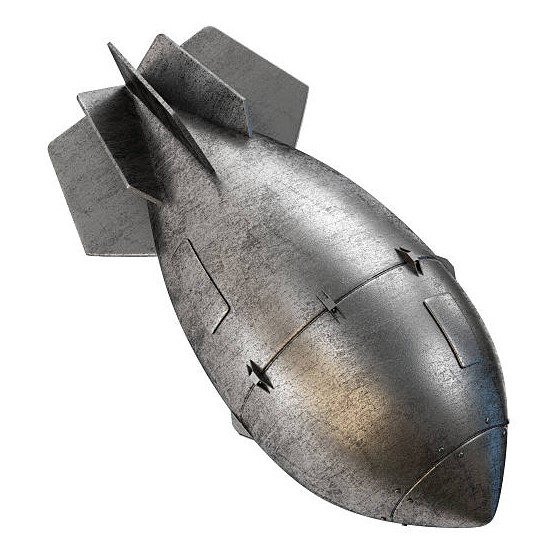Serbia’s Vlatacom Institute unveiled a powerful new guided bomb at a major defense show in Belgrade, sparking rumors it was made for Egypt to target Ethiopia’s huge dam on the Nile. The event, held from September 23 to 26, 2025, comes as tensions over water rights in the region hit new highs, with Egypt worried about its water supply.
Bomb Debut at Partner Exhibition
The Partner 2025 exhibition in Belgrade drew global attention when Vlatacom Research and Development Institute showed off its latest weapon. Called the Vlatacom Massive Ordnance Air Blast or VMOAB-4T, this bomb weighs about four tons and is part of a series that includes even heavier versions up to ten tons.
Experts at the show noted its design looks a lot like American bombs used for big strikes. Videos from the event included test footage, which some observers claim happened in Egypt. This has fueled talk that Serbia developed it with Cairo in mind.
No official word from either country confirms this. But the timing lines up with growing worries in the Middle East and Africa over water conflicts.

Key Features of the VMOAB-4T
This bomb is built for high impact missions. It uses a satellite guided system for precise hits and can be dropped from cargo planes like the C-130.
Here are some standout details:
- Weight: Around 4 tons for the base model, with options up to 10 tons.
- Explosive Power: Carries over 3,000 kg of explosives in its warhead.
- Guidance: Combines inertial navigation with satellite tech for accuracy.
- Deployment: Uses a slide and parachute setup for safe release from aircraft.
The bomb can target bunkers, command posts, or large soft areas. Tests shown suggest it is already in production, ready for real world use.
A quick look at how it stacks up against similar weapons:
| Bomb Type | Weight (tons) | Explosive Load (kg) | Primary Use |
|---|---|---|---|
| VMOAB-4T | 4 | 3,130 | Hardened targets and bunkers |
| US MOAB (GBU-43) | 9.8 | 8,482 | Massive blasts on soft targets |
| US MOP (GBU-57) | 13.6 | High penetration | Deep underground structures |
This table shows the Serbian bomb fits into a class of heavy hitters, but with a focus on versatility.
Production details point to quick scaling. Sources say the design allows for fast assembly, which could appeal to nations needing urgent defense boosts.
Links to Egypt and Water Security Fears
Rumors started flying right after the unveil. Many point to Egypt’s long standing issues with Ethiopia over the Grand Ethiopian Renaissance Dam, or GERD.
Egypt relies on the Nile for most of its water. The dam, finished in 2025, could cut that flow if not managed right. Addis Ababa says it is vital for power, aiming to produce over 5,000 megawatts to light up homes and factories.
Recent floods in the region have added to the strain. Heavy rains in 2025 overwhelmed parts of Sudan and Egypt, with some blaming the dam’s operations.
Arab military watchers claim the bomb tests happened in Egypt, hinting at a secret deal. Serbia has sold arms to Egypt before, so this fits a pattern of quiet partnerships.
The Ongoing Nile Dam Conflict
The GERD sits on the Blue Nile in Ethiopia, about 14 km from Sudan. Started in 2011, it cost $5 billion and is now Africa’s largest hydro project.
Egypt and Sudan fear it will dry up their shares of the river. Talks have dragged on for years, with no big breakthroughs. In September 2025, Sudan and Egypt rejected calls to involve more Nile Basin countries in the dispute.
Ethiopia fired up the dam at full capacity this year, easing some local power shortages but raising alarms downstream. Recent posts on social media highlight fears of floods or droughts tied to the dam.
A 2025 report noted the dam’s reservoir could hold enough water to affect millions. Egypt has built coalitions to push back, while Ethiopia stands firm on its rights.
This row echoes past water fights, like those over dams in Asia or the Americas.
Global Reactions and Risks
World powers are watching closely. The US and others have tried to mediate, but progress is slow.
Serbia’s role adds a twist, given its history with NATO bombings in 1999. That past makes Belgrade careful in arms deals, but exports continue.
If the bomb is for Egypt, it could shift balances in Africa. Experts warn it might lead to escalations, though no one wants open conflict.
Recent events, like explosions at Serbian plants in May 2025, show the risks in defense work. Still, the tech advances could help in other areas, like disaster response.
What This Means for the Future
This development highlights how arms tech ties into resource battles. As climate change worsens water shortages, such tools might become more common.
For now, the bomb remains a rumor filled story, but it underscores real fears. Readers should stay tuned as more details emerge.
What do you think about this potential arms deal? Share your views in the comments and pass this article along to spark discussion.
